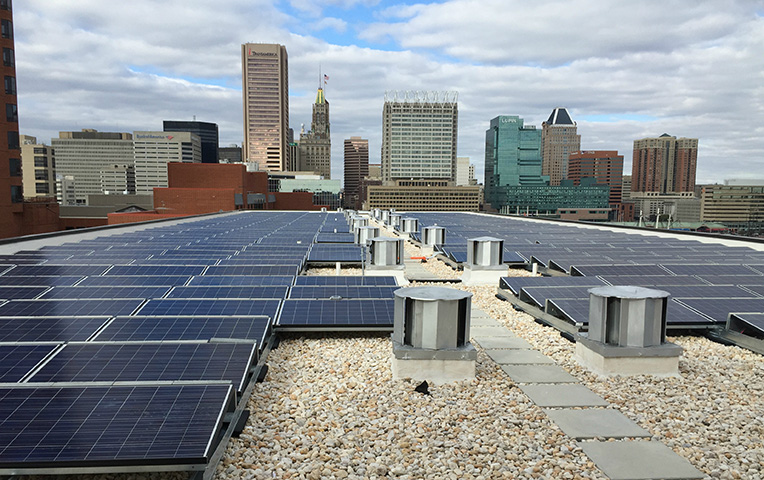Two years ago, SREC prices in the state of Pennsylvania were at an extreme low point of $4/SREC. In response to these low prices, the Pennsylvania legislature passed Act 40 which removed the eligibility of out-of-state systems to produce Pennsylvania SRECs. The effects of this supply reduction were not seen immediately, but since the Act’s passage SREC prices in Pennsylvania have begun to increase.
Border Close to Now
At the start of 2016, SREC prices in Pennsylvania were strong at $18 but as the year progressed prices slowly declined and reached $4 in the middle of 2017. These low prices slowed development in the state and made it very difficult for solar projects to enter the market. These factors came together to eliminate much of the benefit from Pennsylvania’s solar carve-out in its Alternative Energy Portfolio Standard to encouraging in-state solar deployment. This led to the decision under Pennsylvania Act 40 to close the SREC border, disallowing out-of-state systems to generate SRECs. Following Act 40, the rebound in pricing was not immediate. Despite the Act’s passage, prices from when Act 40 was implemented in October 2017 through January 2019 prices remained low, below $8/SREC. The delay in price reaction to the change is likely due to the haziness over interpretation of the act. The PUC made a ruling clearing up ambiguity in April 2018 that completely shut off the market to any generator not in Pennsylvania regardless of when they were interconnected and eliminated all SRECs that had already been minted from out of state systems.
Since the start of 2019, prices have risen to almost six times their previous value, with prices set at $45/SREC. This will mean a boon for solar development in the state that still has about half of its 0.5% solar carve-out to fill out by 2021. This boon will mean more solar jobs and build out in Pennsylvania over the coming year, building on a continuing trend. Pennsylvania is already seeing an uptick in solar installation with 228 more installations in the first quarter over last year. The border close did not eliminate all interstate REC trading in Pennsylvania. Out of state SRECs can still be sold in Pennsylvania can still sell their SRECs there as Tier I RECs.
Looking Forward
In April, a bill was introduced to the Pennsylvania legislature that would dramatically increase the AEPS and the solar carve-out. It would bring the AEPS to 30% and the solar carve-out to 10% by 2030, constituting a twenty-fold increase in demand for SRECs in the state from the original target of 0.5%. If this legislation were to pass when the legislature reconvenes in September, it would make Pennsylvania one of the more ambitious states when it comes to solar energy targets. It would exceed New Jersey’s 5.1% carve-out, matching Washington DC’s 10% solar by 2041, and falling short of Maryland’s 14.5% by 2030, the highest solar carveout in the country. The change would mean the potential for even more growth in SREC prices beyond 2021. The change to the AEPS would not alter the SACP schedule as it is but would just add on to it beyond where it currently stops. The schedule would be split into two different targets for 2030; 2.5% of the state’s electricity from residential solar and 7.5% from utility-scale systems. The Pennsylvania legislature will reconvene on September 17th and will deliberate on SB600 by the end of the year.
| Year | Residential | Utility Scale | Total Solar | Full AEPS |
| 2020 | 0.5% | - | 0.5% | 8% |
| 2021 | 0.65% | 0.94% | 1.59% | 10.444% |
| 2022 | 0.82% | 1.88% | 2.7% | 12.888% |
| 2023 | 0.98% | 2.81% | 3.79% | 15.332% |
| 2024 | 1.13% | 3.75% | 4.88% | 17.776% |
| 2025 | 1.3% | 4.5% | 5.8% | 20.22% |
| 2026 | 1.5% | 5.25% | 6.75% | 22.664% |
| 2027 | 1.78% | 6% | 7.78% | 25.108% |
| 2028 | 2.11% | 6.75% | 8.86% | 27.552% |
| 2029 | 2.5% | 7.5% | 10% | 30% |
With the border for SRECs closed and the potential of a new AEPS on the horizon, prospects for SRECs and solar build in Pennsylvania are looking good. To be able to meet the ambitious proposed goal there will need to be thousands of more jobs in Pennsylvania in and around the solar industry to support the rapid and large scale build out of new solar in the state. When the legislature returns in September they will have multiple pieces of renewable energy legislation on the docket, including the increase to the AEPS as well as a bill that would require 100% renewable energy usage in the state by 2050. If passed, these bills could help to propel Pennsylvania towards catching up with its neighbors New Jersey and Maryland in the renewable energy industry.
ABOUT SOL SYSTEMS
Sol Systems, a national solar finance and development firm, delivers sophisticated, customized services for institutional, corporate, and municipal customers. Sol is employee-owned, and has been profitable since inception in 2008. Sol is backed by Sempra Energy, a $25+ billion energy company.
Over the last ten years, Sol Systems has delivered 800 MW of solar projects for Fortune 100 companies, municipalities, universities, churches, and small businesses. Sol now manages over $650 million in solar energy assets for utilities, banks, and Fortune 500 companies.
Inc. 5000 recognized Sol Systems in its annual list of the nation’s fastest-growing private companies for four consecutive years. For more information, please visit www.solsystems.com




